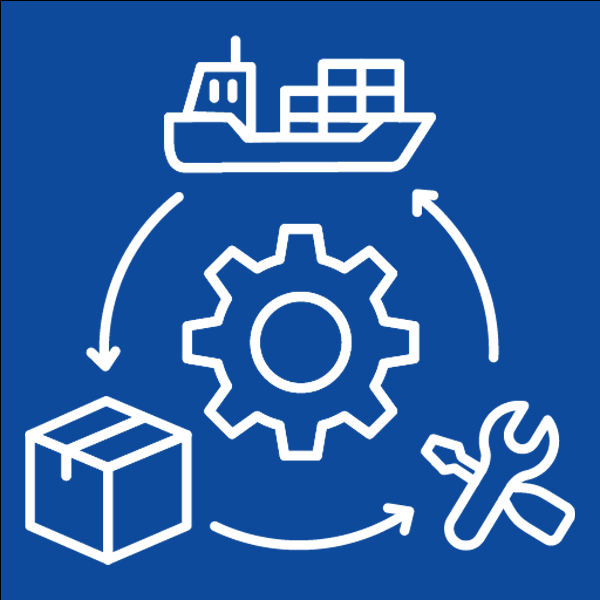Roadmap Strategic Elements
There are a total of 49 key issues. These issues are prioritized to identify the high priority actions that will make the greatest contribution to delivering value to the market (Priority 1) and other actions that could help further improve success (Priority 2).
The analysis identified opportunities for investments, expanded capability, and progress across all pillars and the spectrum of scope areas and infrastructure to design, license, deploy, and operate advanced reactors, all with the expected outcome to strengthen the industry. Collectively, these opportunities, along with the associated actions, represent the action plan for key accomplishments by industry and partner stakeholders. In the previous version of the roadmap, this section was called “Actions.”
At the first meeting of the Advanced Reactor Roadmap Implementation Board, a comment was made that the focus should be on addressing the key issues, not just completing the actions. As such, this section has been renamed “Key Issues” to get that focus. For each key issue, the progress to date reflects what has been done to address the key issue. Work has advanced across each of the key issues since 2023, though incremental steps and less significant progress is not highlighted in this update.
For a few key issues, the actions have been completed, and additional actions have not been created. It has been determined that all the major actions that could be taken to address the key issue have been taken. The key issue will be monitored to evaluate if the key issue is being addressed or if additional actions are needed.
Navigate to all the Key Issues within a Strategic Element by selecting the Strategic Element lower on this page.
Strategic Elements
Regulatory Efficiency
Licensing
To reach the objective of deploying a large fleet of advanced reactors during the 2030s, licensing must be predictable, timely, efficient, and cost-effective to facilitate the regulator’s throughput of applications needed for large-scale deployment.
Learn More
Environmental
To achieve widespread deployment of advanced reactors, the implementation of the National Environmental Protection Act (NEPA) in the United States and the Impact Assessment Act (IAA) in Canada must be streamlined to achieve efficient and timely environmental reviews.
Learn More
Oversight
The regulatory and safety oversight of the construction and operations of advanced reactors will benefit from a fresh approach that does not make the same assumptions as for the operating fleet.
Learn More
Technology Readiness
Fuel Cycle
Availability and management of nuclear fuel and feedstocks must evolve to meet the evolving needs of society and the industry. Agile approaches to common practices may enable accelerated deployment timelines.
Learn More
Supply Chain
The supply chain enabling advanced reactor's to benefit from novel fuels, coolants, technologies, and deployment models requires technology development and scale-up. The scope of the supply chain strategic element includes basic commodities, manufacturing, non-light water technology products (such as molten salt heat exchangers and pumps, and nuclear-grade graphite), and a sustained supply of spares and replacement components.
Learn More
Plant/SSC Design
A significant amount of time has passed since the current operating fleet was designed. Due to the different features of advanced reactors in terms of coolant, size, and type of fuel, design of advanced reactors will present unique challenges.
Learn More
Nuclear Beyond Electricity
With the effects of climate change becoming more apparent and increasing engagement in decarbonization policy across the world, the potential role of NBE in North America is increasing in importance. Advanced reactors, with some designs providing a smaller required geographic footprint or higher-temperature heat, present an opportunity for nuclear power plants to provide their reliable, carbon-free energy to other markets.
Learn More
Codes and Standards
Consensus codes and standards provide acceptance criteria, methodologies, processes, and other data based on the accumulated experience of the industries they serve and documented by subject matter experts. The design of advanced reactors and a new generation of nuclear reactor construction challenge the context and numerous assumptions that the current consensus codes and standards are based on.
Learn More
Project Execution
Project Management
The scope of the project management strategic element is to develop guidance for project management processes, methods, and tools for new advanced reactor power plant projects. This includes contract, scope, schedule, cost, quality, human resources, communication, and risk management.
Learn More
Engineering and Procurement
The scope of the engineering and procurement strategic element is to develop guidance for engineering processes, methods, and tools to support the design, licensing, construction, and commissioning for advanced reactor power plant projects.
Learn More
Construction and Commissioning
The scope of the construction and commissioning strategic element is to develop guidance for organizing construction contract companies, personnel, and tools to support the building, logistics, construction equipment, and commissioning of advanced reactor power plant projects.
Learn More
Initial Operations and Maintenance
The scope of the Initial Operations and Maintenance strategic element is to identify and determine areas of focus where lessons learned are applied and new technologies and processes are employed to operate the plant safely and reliably. We must leverage our experience to operate and maintain the plant better while being efficient and cost-effective.
Learn More
Workforce Development
The workforce development strategic element will address the development of a new advanced nuclear workforce for design, construction, and operation and the needed skillsets and training. The overall goal of this element is to ensure an adequate level of skilled labor in support of both construction and operation of the advanced reactor fleet. A secondary goal is to accomplish this without undue impact on existing plants.
Learn More